Abstract
Senescence of isolated petals of Tradescantia is accompanied by a large increase in membrane permeability, and application of ethylene hastens the onset of this increase. There is a 1- to 2.5-hour lag between ethylene application and the onset of anthocyanin efflux (an indicator of increased membrane permeability). Simultaneous application of 0.1 millimolar cordycepin or cycloheximide with ethylene abolishes the response to ethylene. Analysis of phospholipid levels in these petals during senescence has shown that the increase in membrane permeability is accompanied by a massive loss of phospholipids. Factors which enhance or retard the rate of anthocyanin efflux exert a corresponding effect on the rate of phospholipid loss. The composition of the phospholipid fraction remains unchanged during senescence. The activity of phospholipase D declines during senescence whereas that of acyl hydrolase remains essentially constant.
Full text
PDF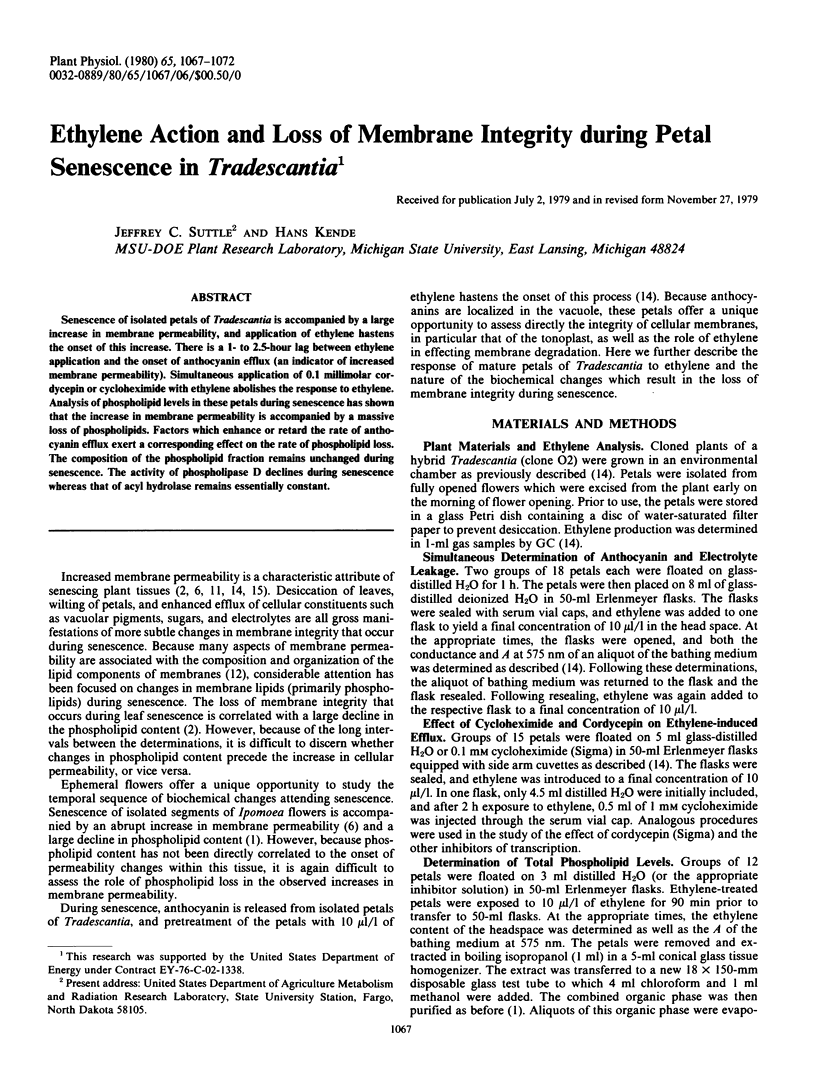
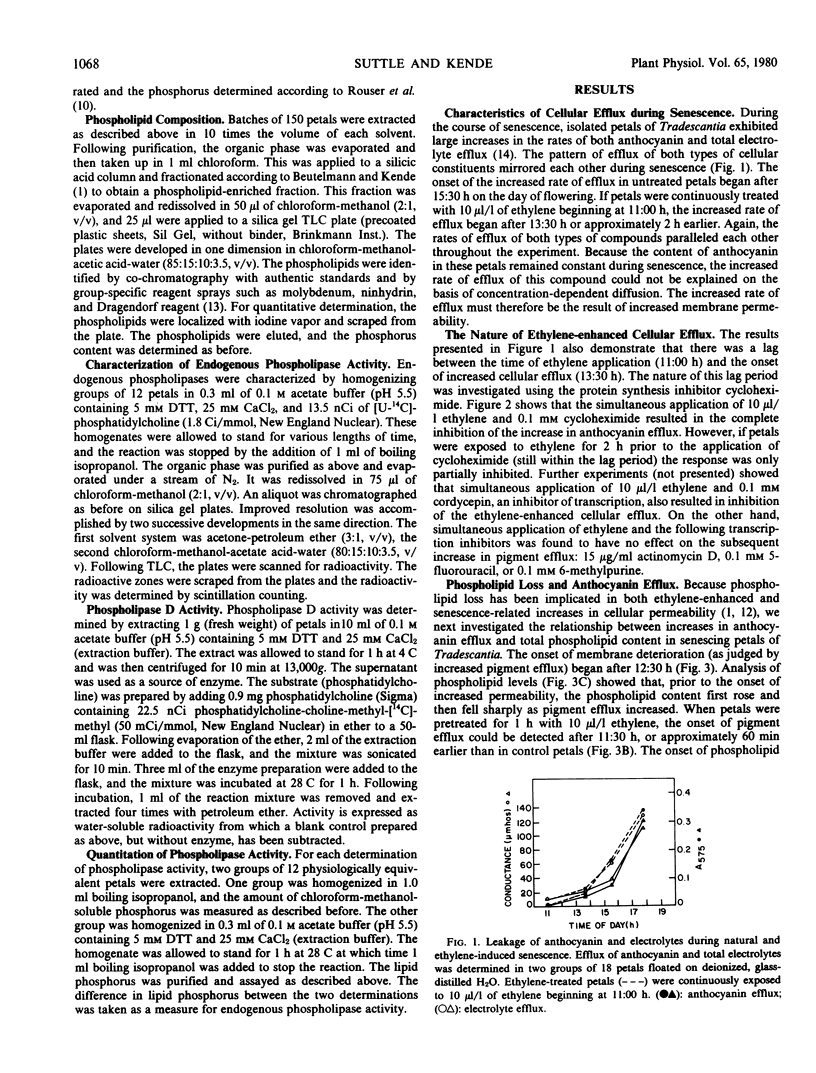
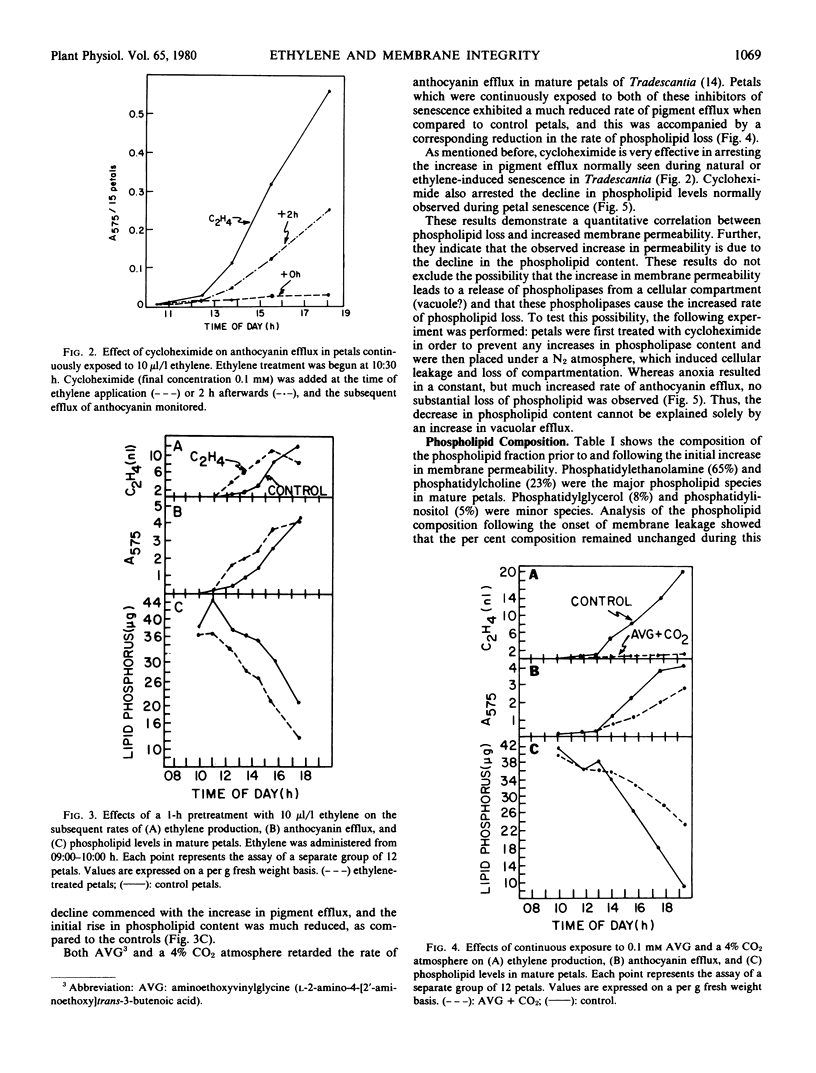
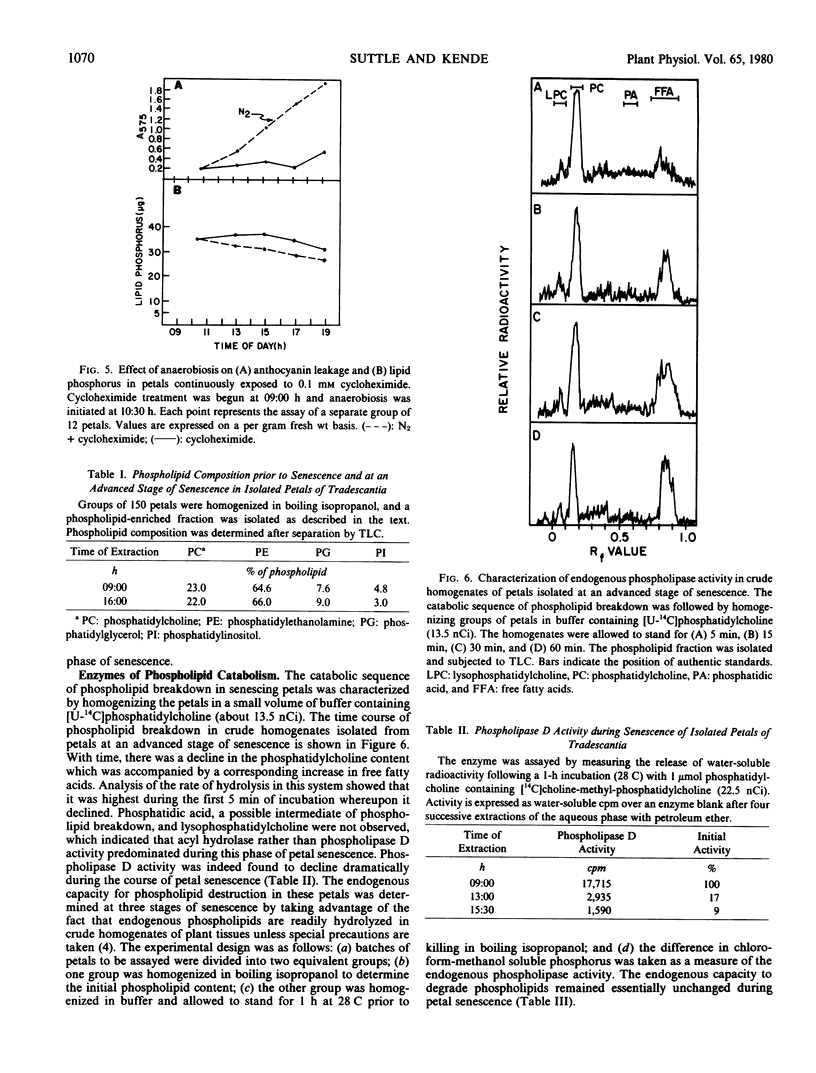
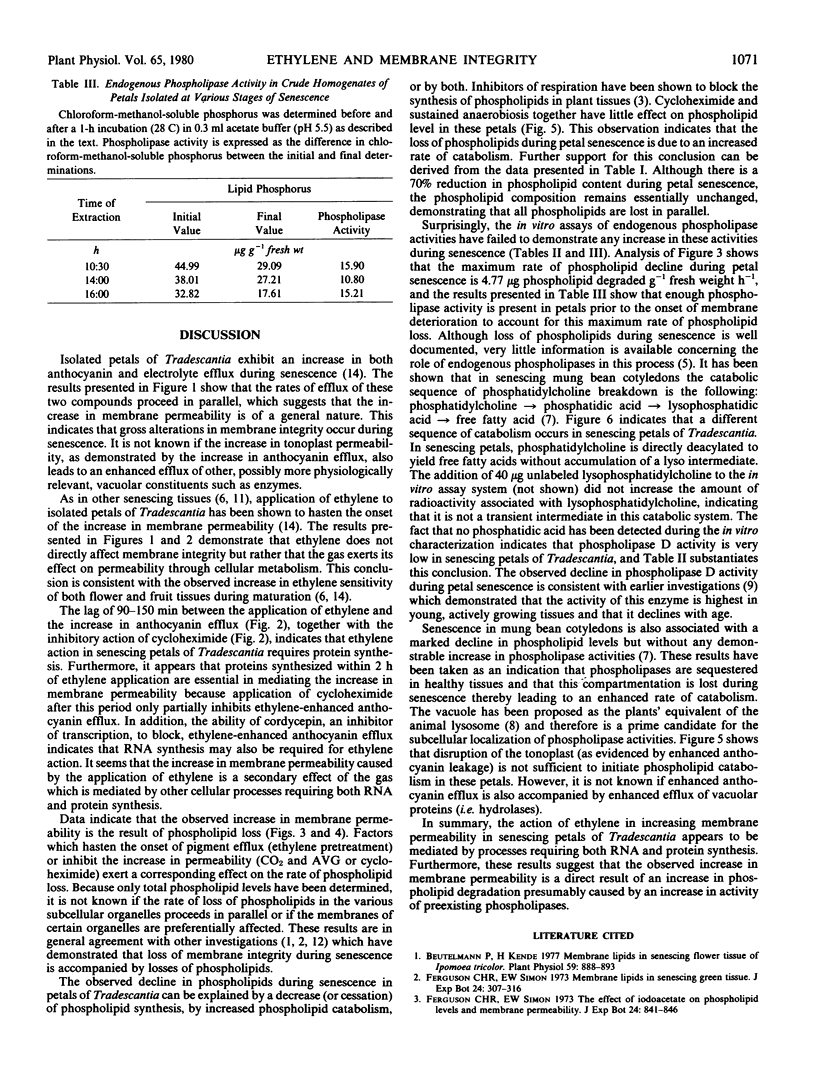

Selected References
These references are in PubMed. This may not be the complete list of references from this article.
- Beutelmann P., Kende H. Membrane Lipids in Senescing Flower Tissue of Ipomoea tricolor. Plant Physiol. 1977 May;59(5):888–893. doi: 10.1104/pp.59.5.888. [DOI] [PMC free article] [PubMed] [Google Scholar]
- Hanson A. D., Kende H. Ethylene-enhanced Ion and Sucrose Efflux in Morning Glory Flower Tissue. Plant Physiol. 1975 Apr;55(4):663–669. doi: 10.1104/pp.55.4.663. [DOI] [PMC free article] [PubMed] [Google Scholar]
- Rouser G., Fkeischer S., Yamamoto A. Two dimensional then layer chromatographic separation of polar lipids and determination of phospholipids by phosphorus analysis of spots. Lipids. 1970 May;5(5):494–496. doi: 10.1007/BF02531316. [DOI] [PubMed] [Google Scholar]
- Suttle J. C., Kende H. Ethylene and senescence in petals of tradescantia. Plant Physiol. 1978 Aug;62(2):267–271. doi: 10.1104/pp.62.2.267. [DOI] [PMC free article] [PubMed] [Google Scholar]


